The world of guns is one defined by its own language. We might use familiar words, but they might not mean the same thing outside of the realm of firearms.
Technical jargon can be awfully confusing, but these terms are important.
It is essential for firearm safety to create a language that’s accessible and well-defined to ensure communication is clear and consistent.
However, this can feel frustrating, especially to new shooters. But we are here to help!
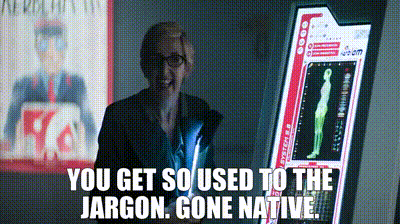
So, let’s dive into the world of firearms language and dissect and discuss the terms we use in regard to handguns and firearms training — the Gun Guy and Gal Dictionary
Table of Contents
Loading…
Why You Should Trust Us
I’ve spent a lifetime shooting that started in a family that hunted every season they legally could. From there, I joined the United States Marine Corps and spent five years as an infantryman.
In the middle of my Marine Corps career, I began writing and have never stopped. I soon earned my NRA instructor certification.
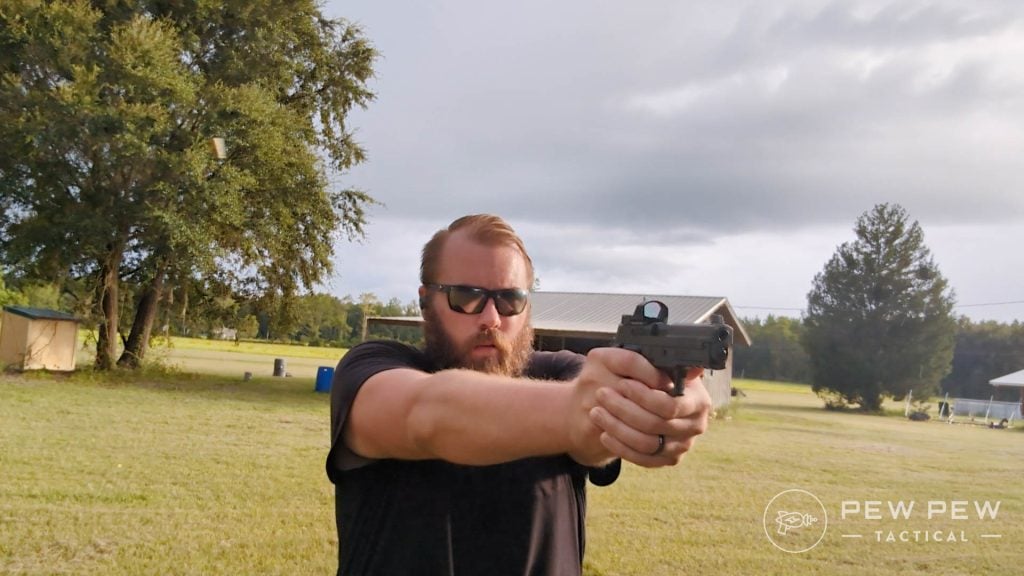
I love shooting, and I love guns — weird guns, old guns, new guns, tactical guns, you name it. I’m a continual student of firearms, and I strive to educate myself to provide the best information possible to the readers of Pew Pew Tactical.
Basic Terms
Load
Load refers to inserting live rounds into your firearm. This can be used in reference to either a magazine or the gun itself.
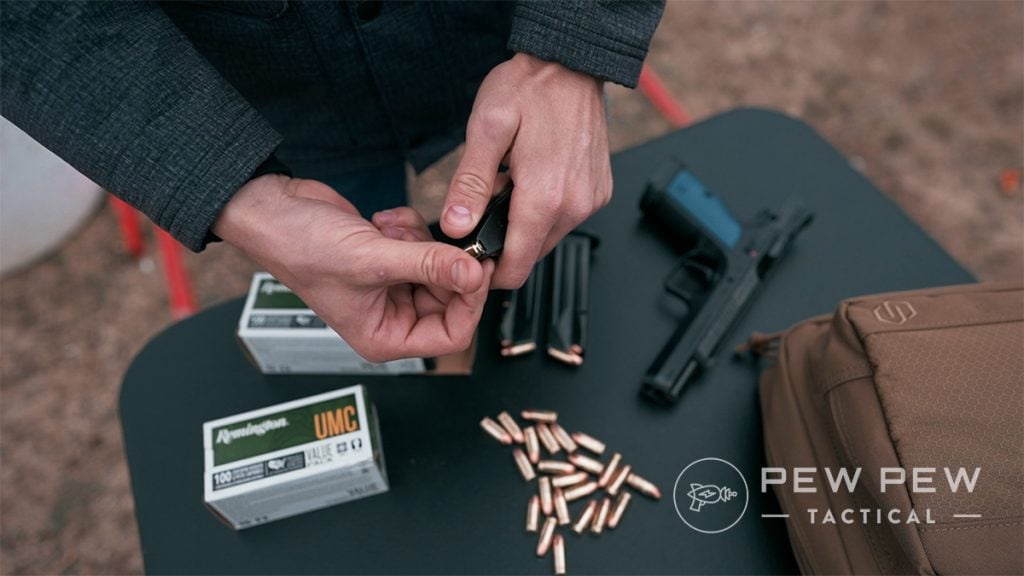
You can load a magazine and then load a weapon with that magazine. It can also refer to loading a revolver cylinder. Load, loaded, and loading all refer to the various actions of inserting ammunition into a firearm or magazine.
Make Ready
Make Ready means to both ready your weapon to fire and ready yourself to fire.
When the term make ready is said, the shooter will operate the slide of their automatic to place a round in the chamber of their gun. With a revolver, make ready may refer to closing the cylinder. After a user ensures the gun is ready to fire, they assume a ready position.
Clear
Clear refers to properly unloading the firearm. Clearing a weapon is a very valuable skill to know and a must-have for shooters.
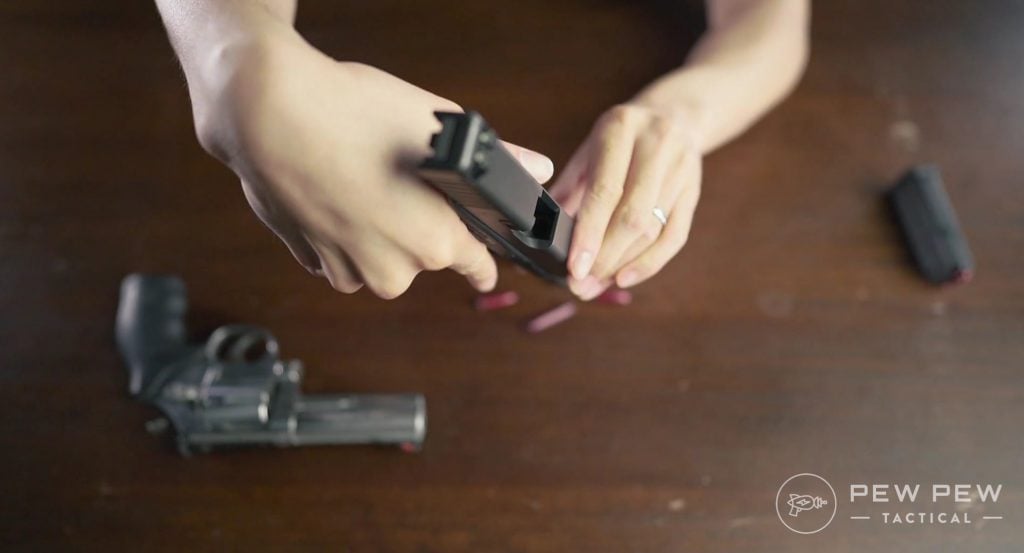
With a semi-automatic, this involves removing the magazine and ensuring the chamber is empty. With a revolver, the cylinder is opened, emptied, and visually ensured to be free of ammo.
Ceasefire
The term ceasefire signifies an immediate need to stop shooting. At most ranges, you’ll need to clear the gun, lock the slide open or expose the cylinder, and set the gun down. When the call ceasefire is sounded, shooters should repeat the command to ensure everyone hears it.
Hot Range
Hot range is used to describe a range where firing is permitted. When a range goes hot, users can shoot safely.
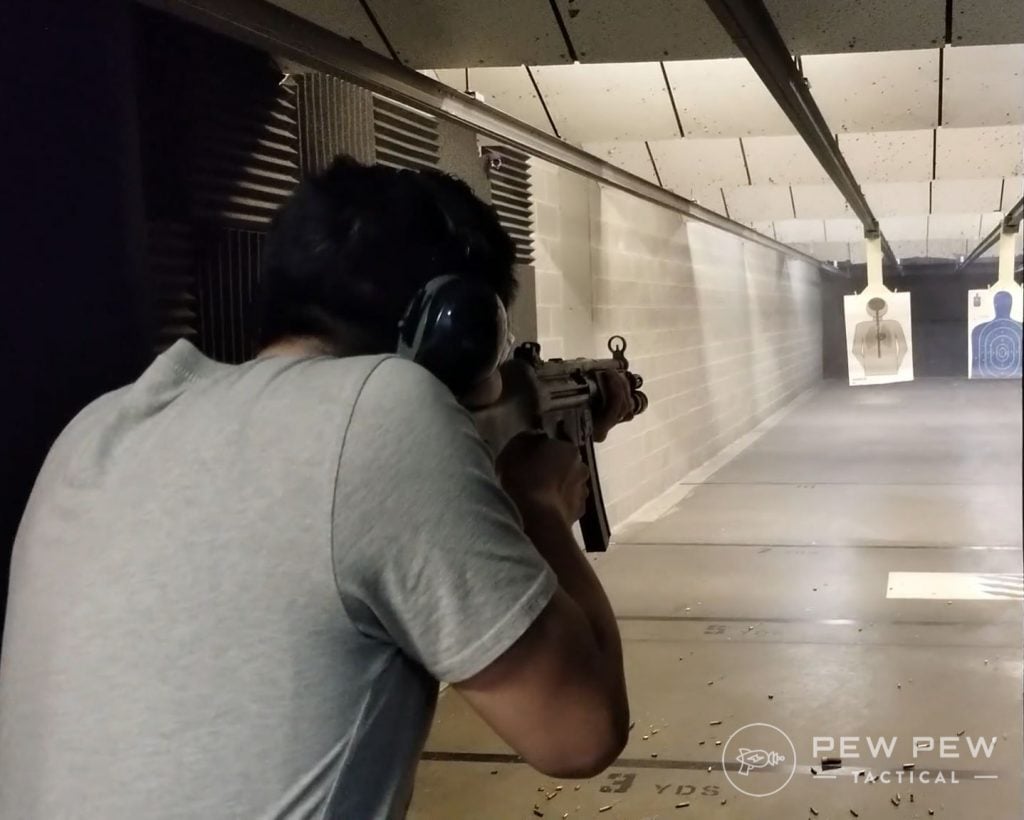
Cold Range
Cold range means the range is shut down, and no one should be firing. A cold range means guns are cleared, and users have holstered their firearms or set them on a table or in any position where the individuals are no longer handling them directly.
Lock It To The Rear
Lock it to the rear is specific to autoloading pistols. The vast majority of autoloading pistols have an action that can be locked to the rear.
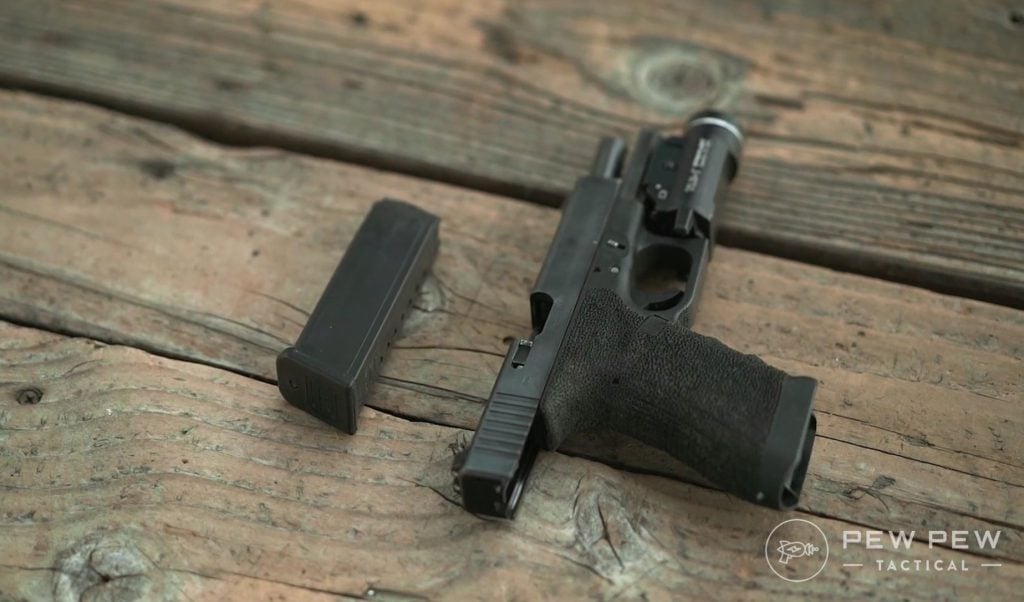
With most guns, a slide lock allows you to lock the slide open. This allows the user, range personnel, and instructors to visually and physically see that the gun is unloaded.
Backstop
All gun ranges will have a backstop that serves as a means to absorb projectiles fired by shooters. A backstop can absorb or deflect projectiles to ensure they do not travel beyond the designated aspects of a range.
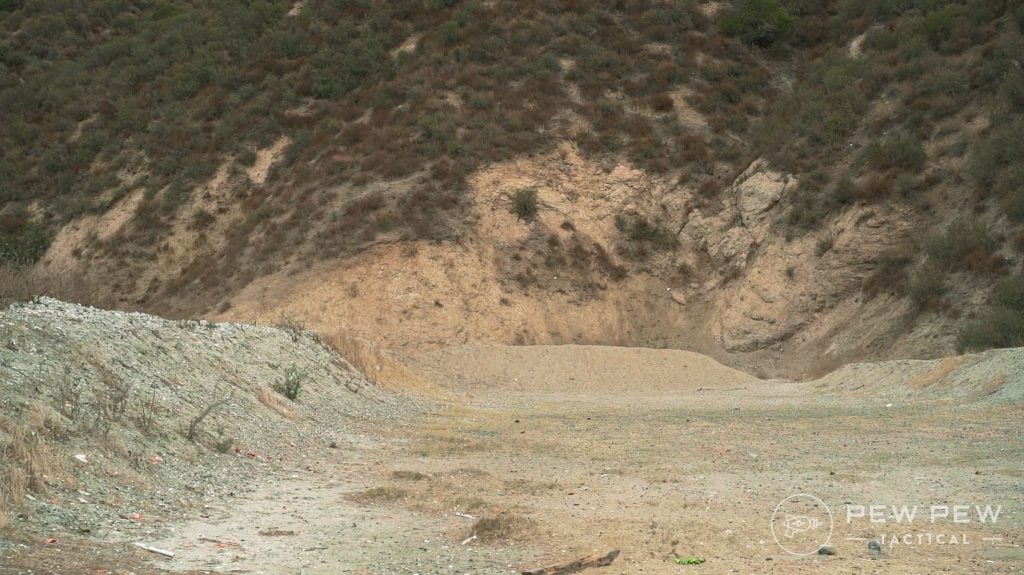
Safety
Safety, in terms of a firearm, refers to a device intended to prevent the weapon from firing until the user intends it to fire. A safety can refer to a passive or active safety device such as a manual thumb safety or an internal safety.
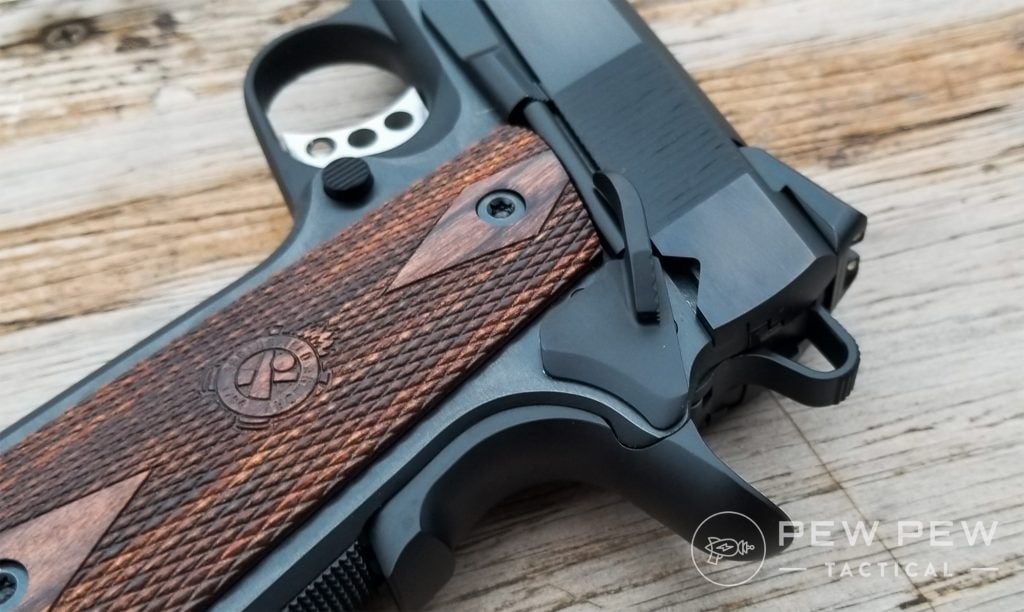
Decocker
A decocker can be a button, lever, or switch that allows a hammer that is currently in single action to safely drop forward into double action or completely decock the weapon.
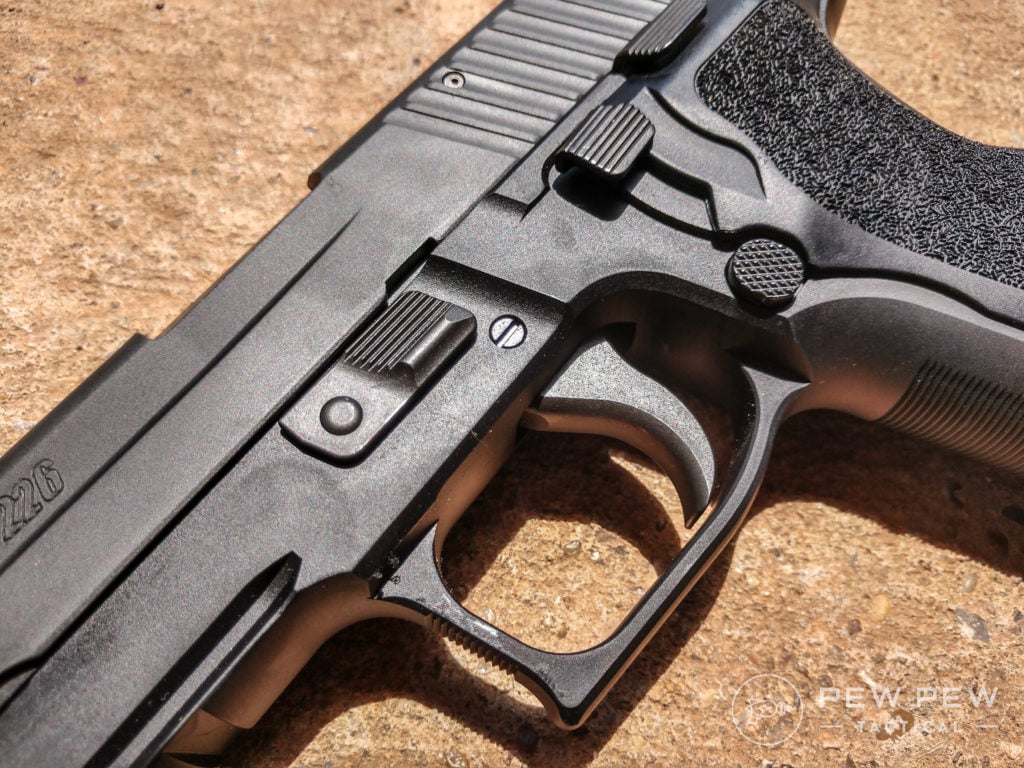
Reload
When training, a reload refers to inserting fresh ammunition into the weapon. This can be a magazine or even a limited number of rounds when it comes to a revolver. Reloads are an essential skill needed for both target shooting and especially combative shooting.
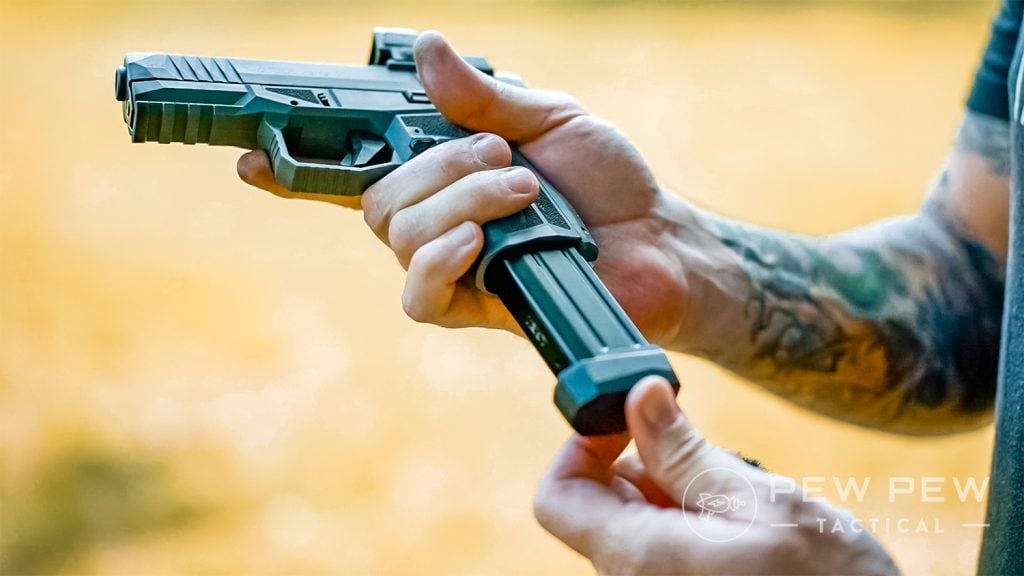
Muzzle
Muzzle refers to the portion of the barrel where the bullet exits. It’s typically the portion of the gun you need to be the most conscious of where it is pointed. It is the ‘dangerous end’ for lack of a better term.
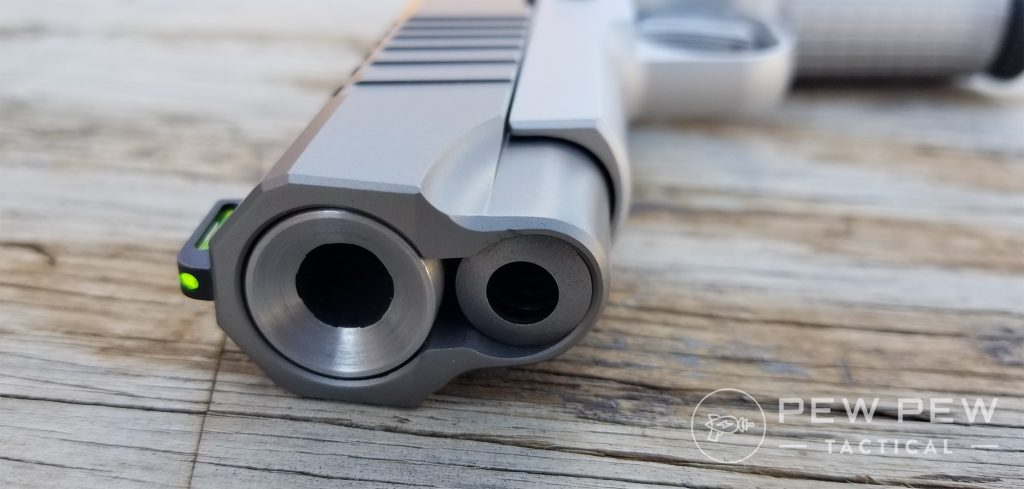
Intermediate Terms
Sight Picture
The term sight picture refers to the view of the sights when aiming at the target. Sight picture is often used to describe the context of how you view your sights. Your front sight should be the focus of your sight picture; typically, your target will look a little blurry with a proper sight picture.
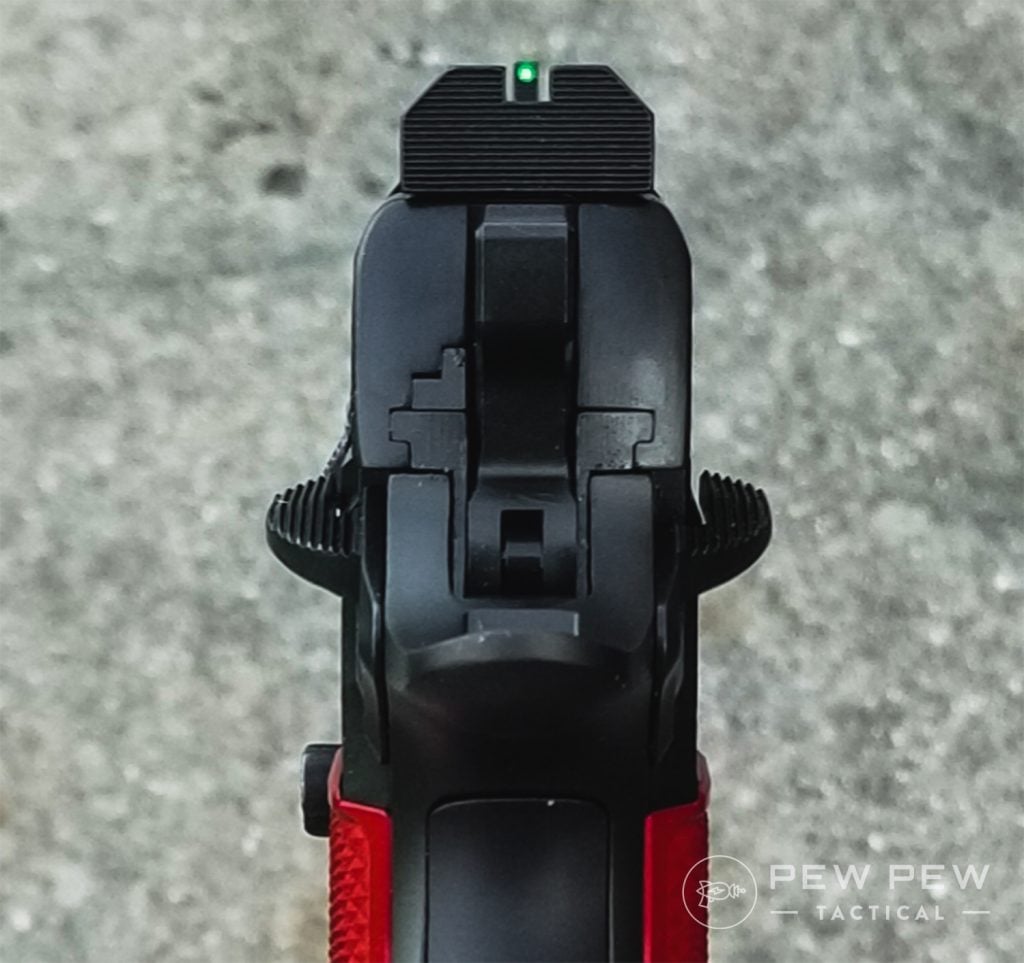
Sight Alignment
Sight alignment refers to iron sights — more specifically, it is how you place the front sight between your rear sight. This process most commonly involves placing your front sight between the rear sight, having the sights level across the top, and having the space even on both sides.
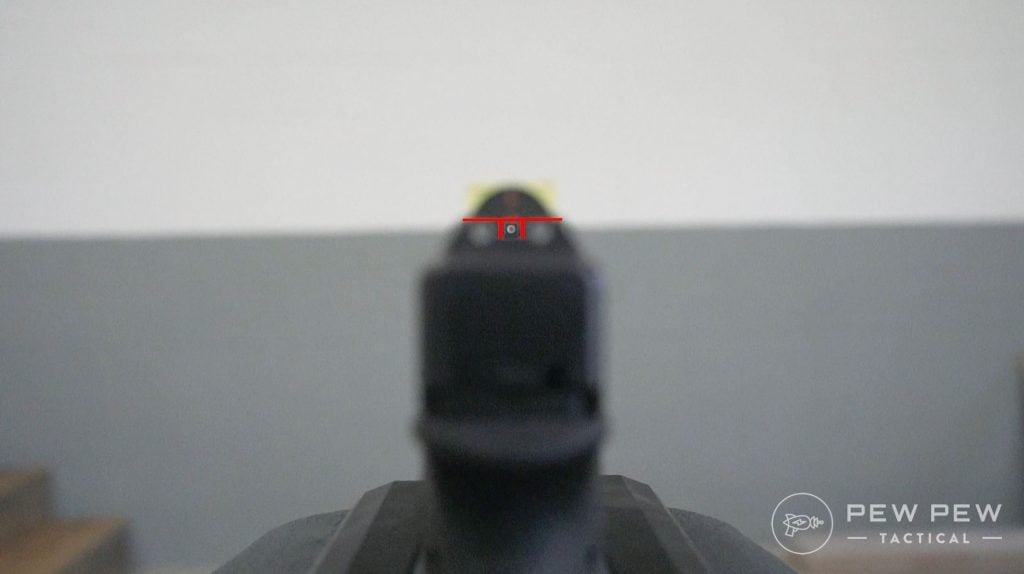
Single Action
Single action applies to firearms where the trigger performs only one action, which is to release the hammer to fire the gun. A single-action trigger pull is often characterized by being short and light. Some firearms are single-action only, and others feature a double-action/single-action design.
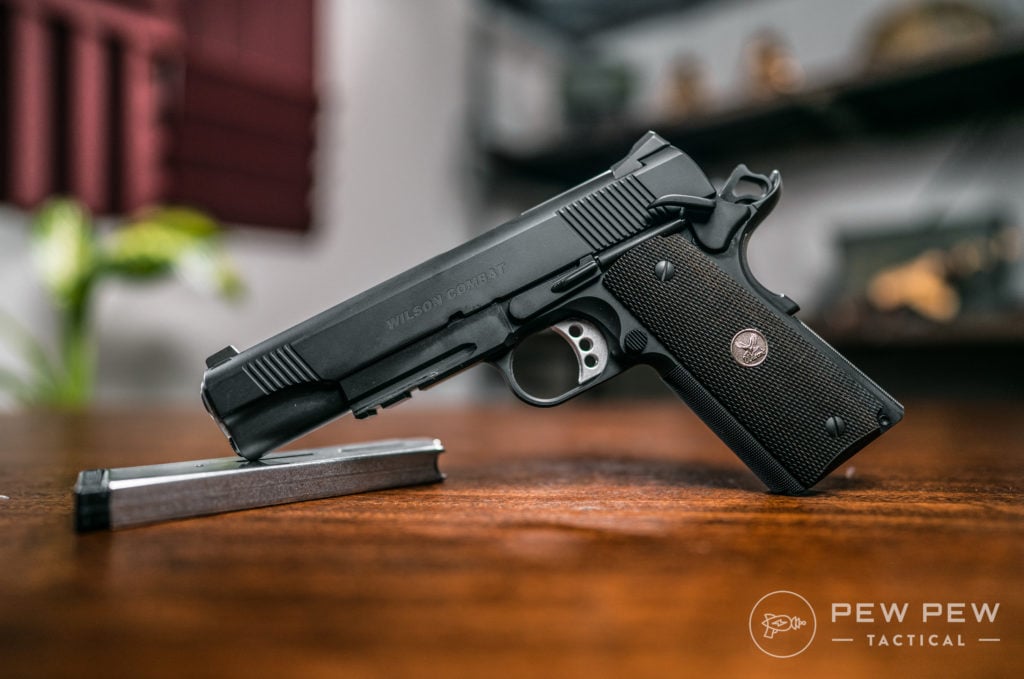
Double Action
Double action refers to a trigger that performs two actions. The first action cocks the weapon’s hammer, and the second action releases the hammer and fires the gun. A longer, heavier trigger pull characterizes double-action trigger pulls. Some firearms are double-action only, and others feature a double-action/single-action design.
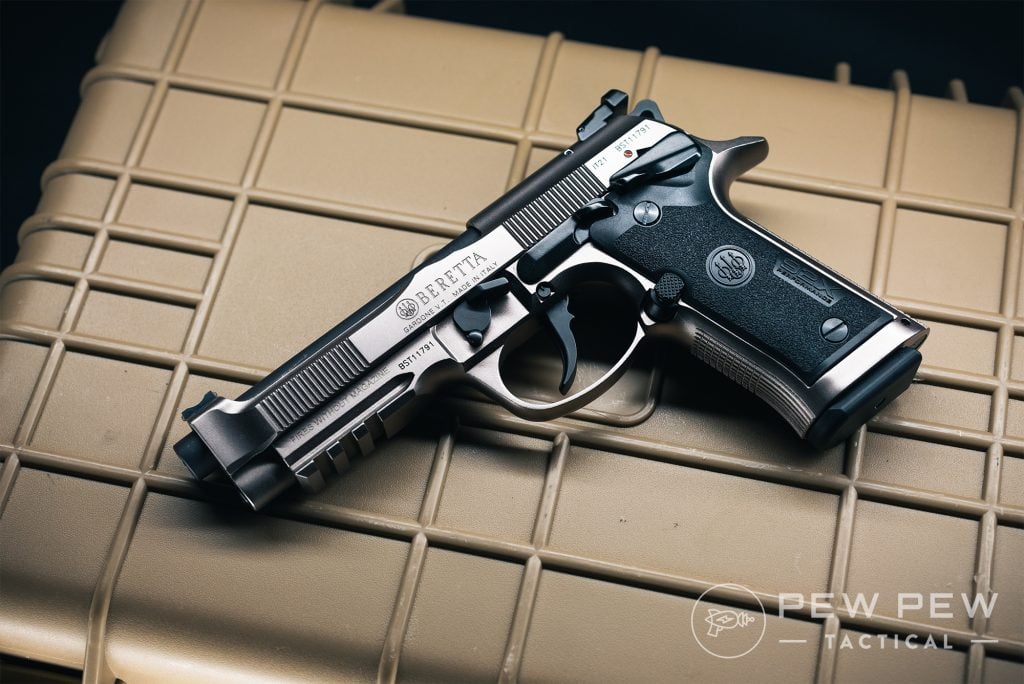
Want to know more? Check out our full article on single-action versus double-action.
Bullet
In proper firearm parlance, a bullet is the projectile that is fired down the barrel. It’s often a term used to describe the entire cartridge, but in reality, it is only the projectile of the cartridge.
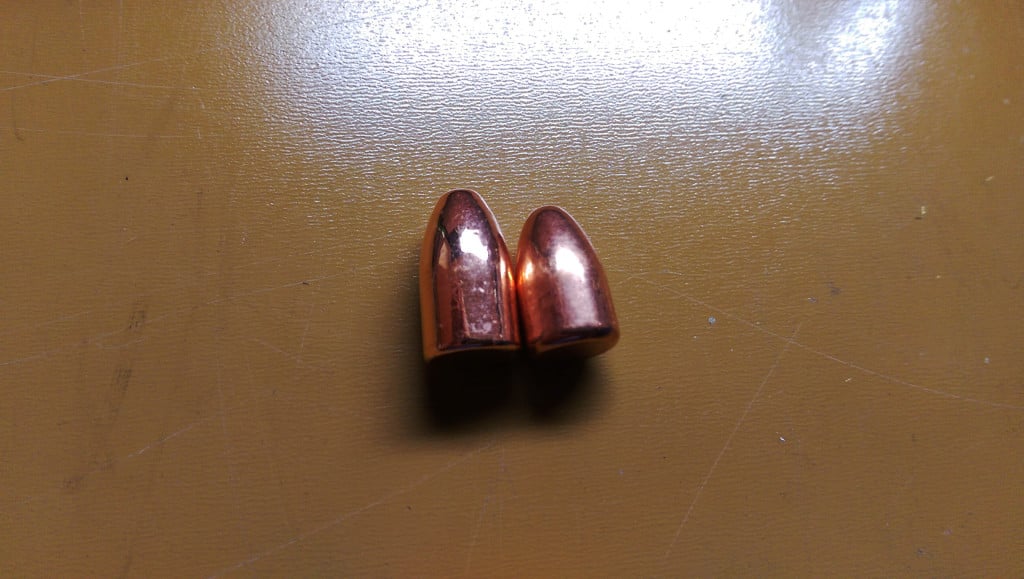
Cartridge
The term cartridge refers to the entire round. This includes the projectile, aka the bullet, the case, the primer, and gunpowder. A cartridge is the proper name for the entirety of the round.
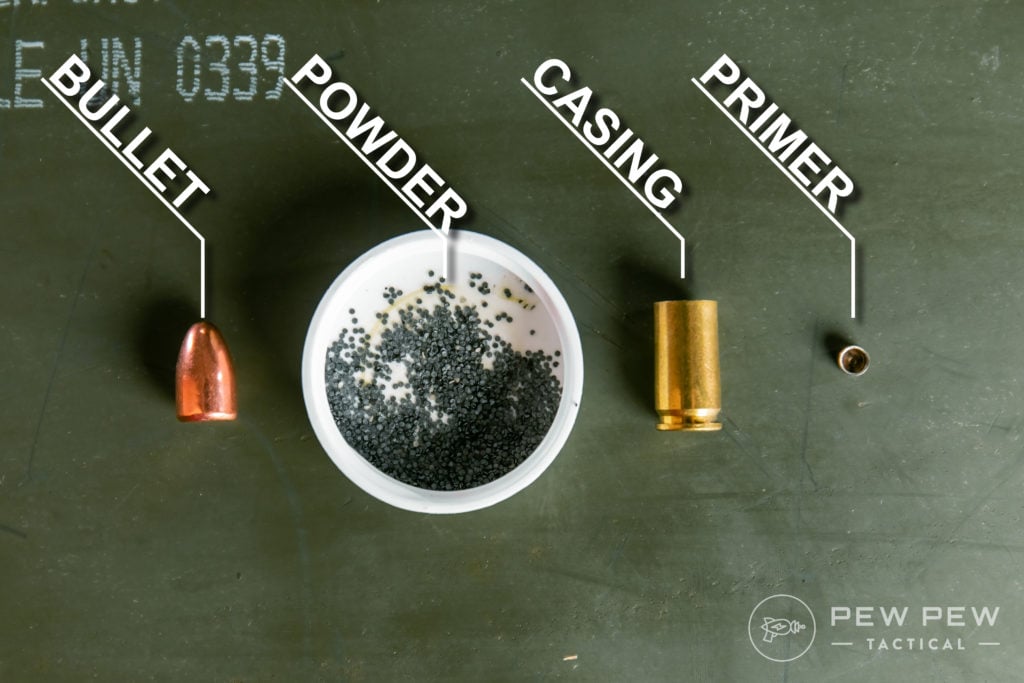
Case
The case refers to the portion of the cartridge that contains the primer and powder and constrains the projectile. Cases are typically made of brass, aluminum, or steel.
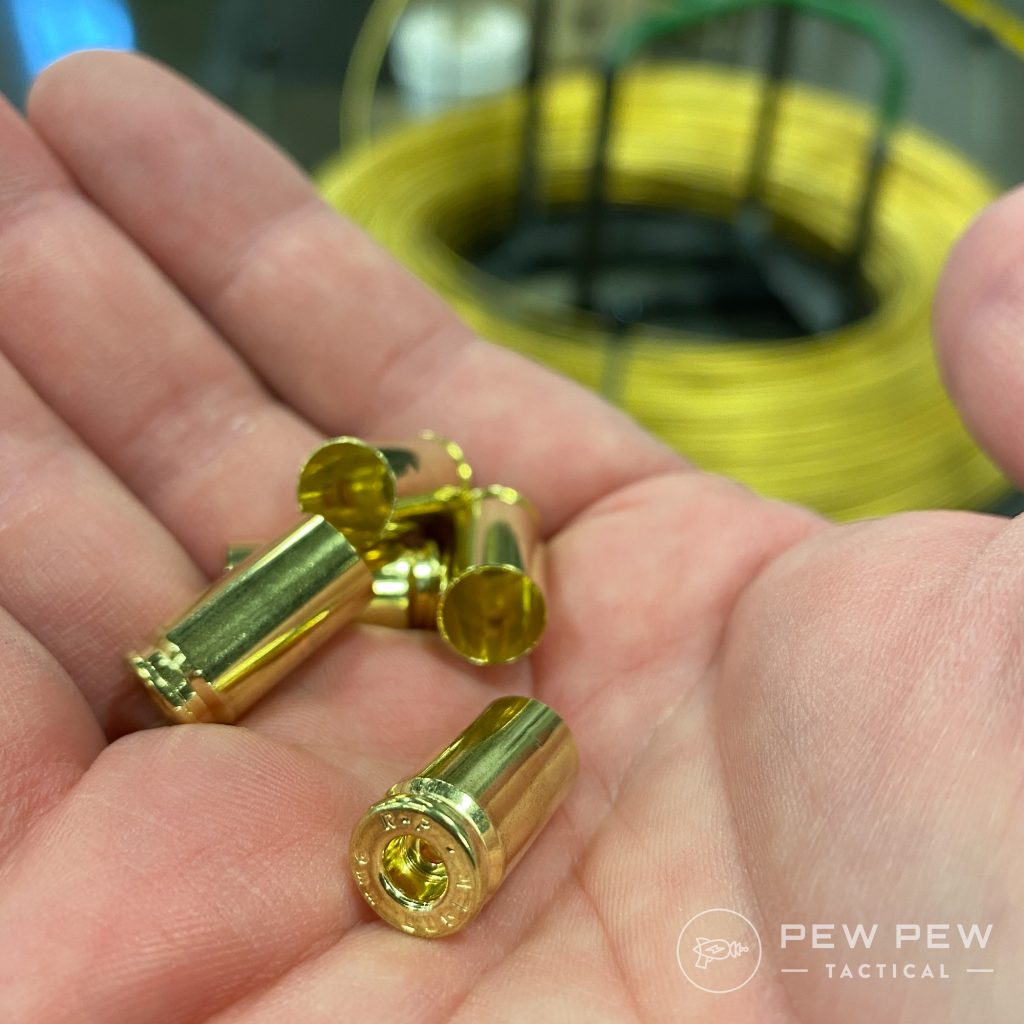
Magazine
In the world of firearms, a magazine is used to load a semi-automatic gun. Detachable magazines are the most common type of magazine. These magazines are removable and contain ammunition. They are loaded separately from the firearm and then loaded into the firearm.
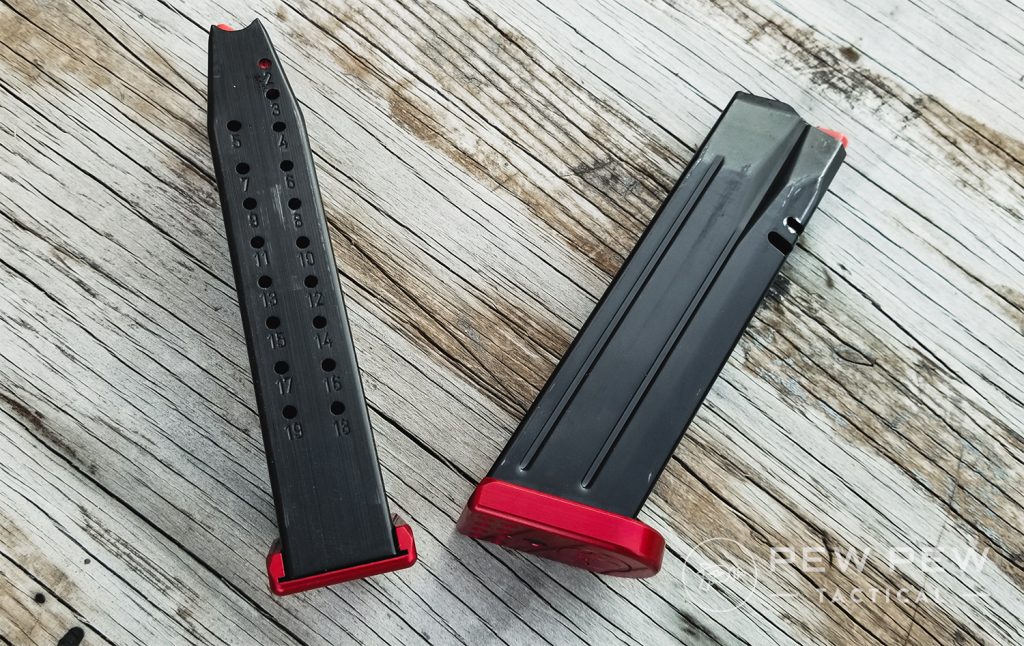
Clip
In the world of handguns, there are very few loaded with clips. They are mostly reserved for very early semi-auto handguns and some older rifles. Clips hold the back of the rounds together so that they can be inserted into the gun all at once.
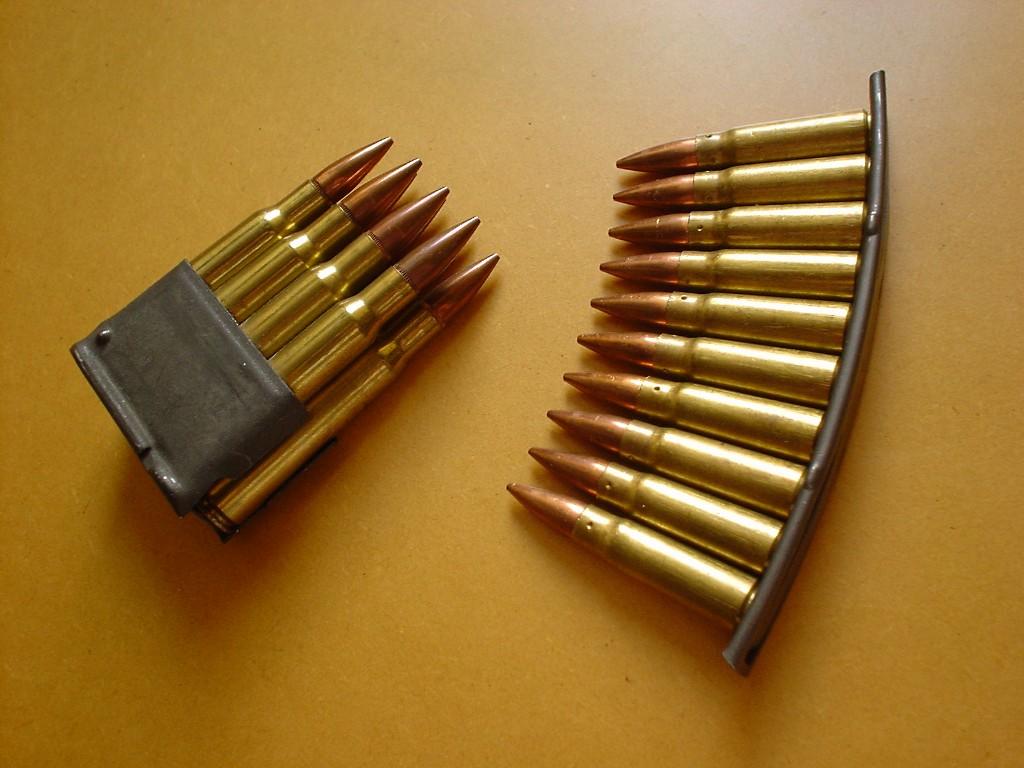
Magazines are often mistakenly referred to as clips due to Hollywood and media popularizing the term. The majority of shooters will not encounter any guns using actual clips.
Cylinder
When it comes to revolvers, the term cylinder is used to describe the rotating portion of the weapon that contains the ammunition. Cylinders revolve and hold anywhere from five to ten rounds, depending on the caliber.
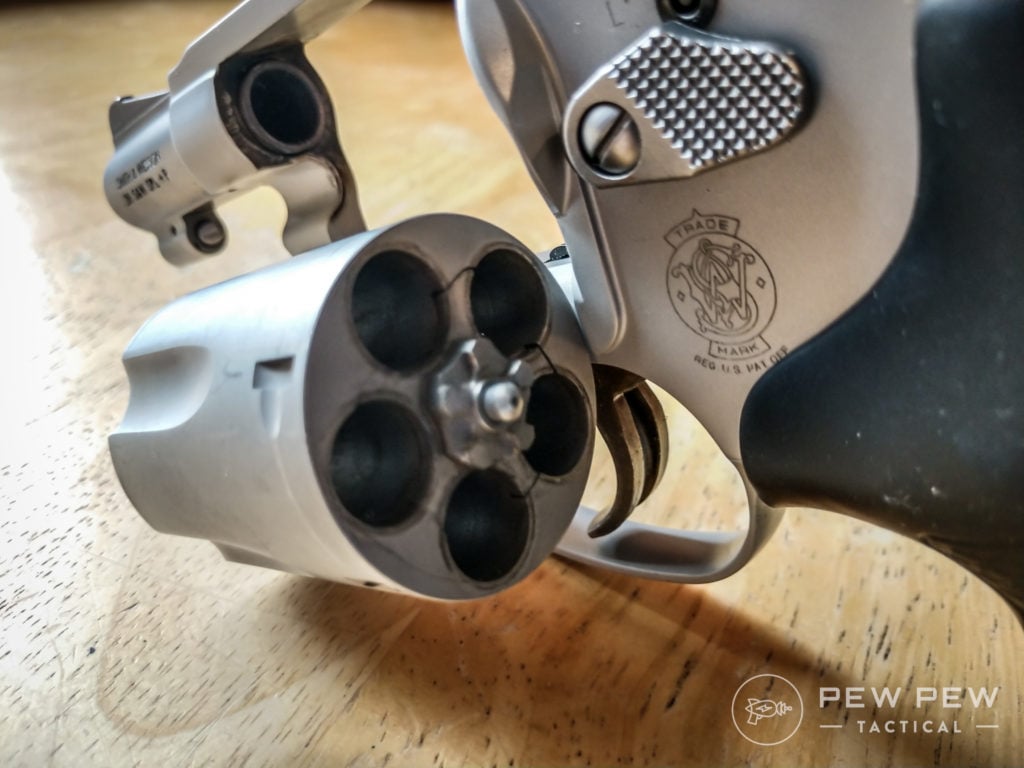
Press Check
Press check refers to the action of ensuring the weapon is loaded with a round in the chamber. A press check is when the shooter partially retracts the slide to look into the chamber and ensure a round is loaded properly into the chamber.
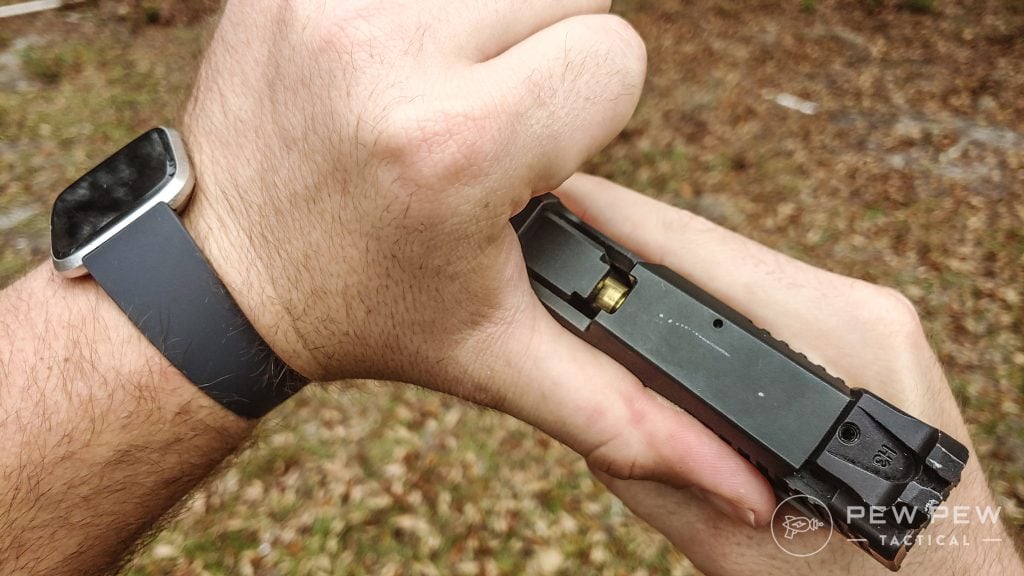
FMJ
FMJ stands for full metal jacket. This refers to a round design with a metal jacket over a lead core. These rounds are typically very affordable and used for training purposes. They are not designed to expand at all and tend to over-penetrate for self-defense purposes.
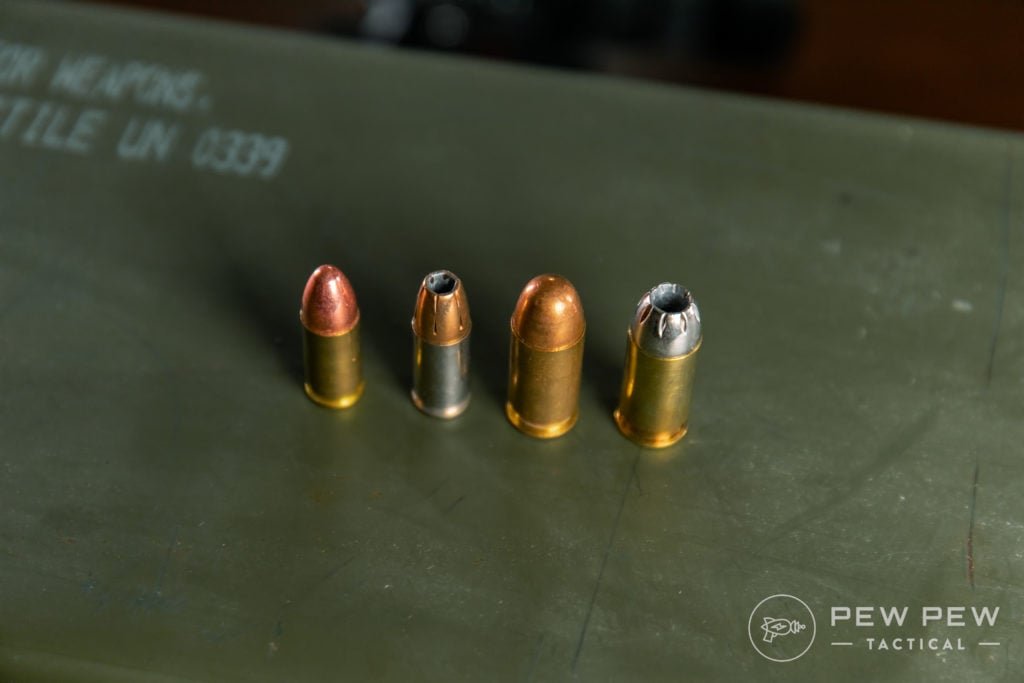
JHP
JHP stands for jacketed hollow point. This refers to a lead round with a metal jacket around a projectile with a hollow center. Hollow points are designed to allow the round to expand when it strikes a soft target. Expansion creates a wider wounder channel while also forcing the round to slow down to prevent overpenetration.
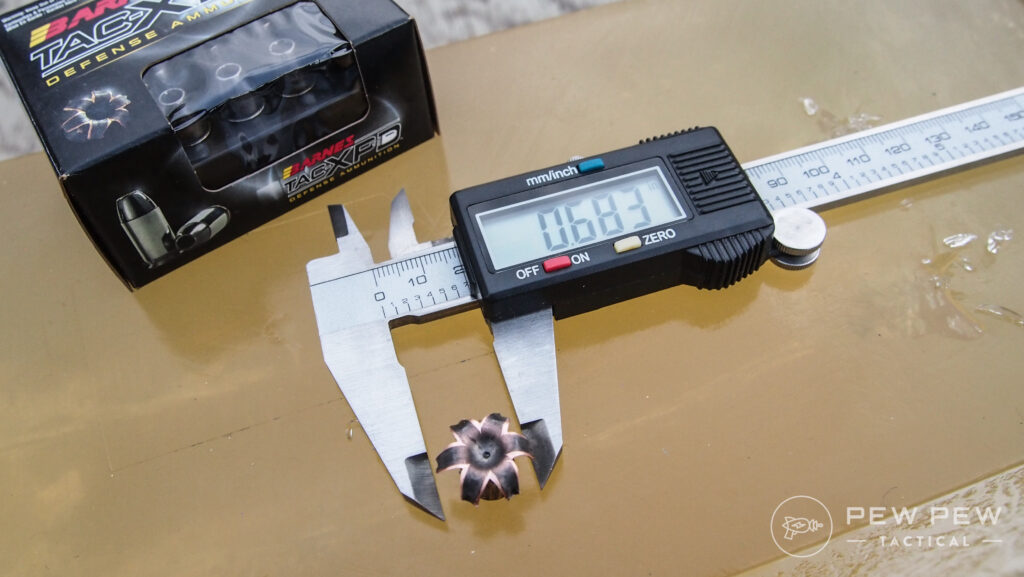
You can learn more in our article – Hollow Points vs. Full Metal Jacket.
Frangible
Frangible ammunition tends to explode on contact into numerous tiny particles.
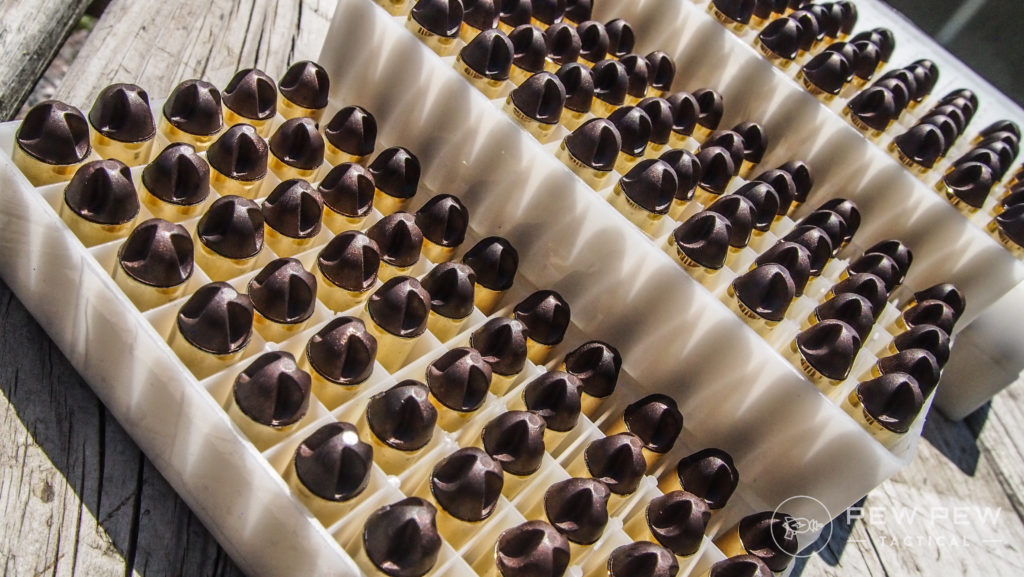
Frangible ammunition is typically used when projectiles are being fired at close ranges against hard targets.
Advanced Terms
Target Focus
Target focus is used when referring to aiming with a red dot. With a red dot, the user focuses on the target instead of the sight and superimposes the dot over the target.
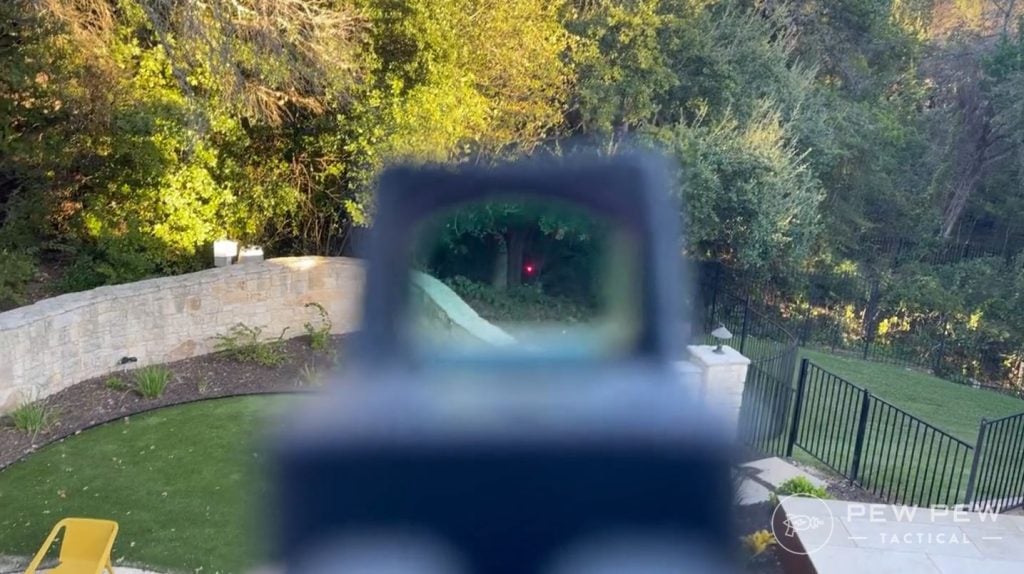
Speed Reload
A speed reload is a type of reload where the shooter drops the magazine regardless of its status. It may be empty or still partially loaded. The shooter allows it to fall free and reloads with a fresh magazine.
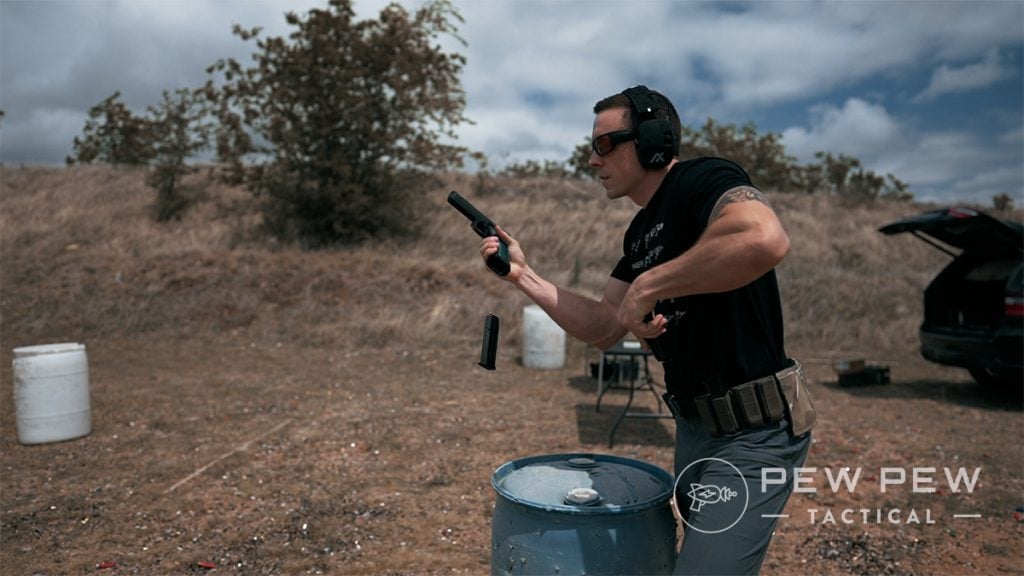
Tactical Reload
A tactical reload has the shooter retaining a partially loaded magazine while completing the reload with a fully loaded magazine. The partially empty magazine is returned to a pouch or holster for use later if needed.
Holster
A holster is both a noun and a verb. As a noun, it is a device used to hold your firearm. As a verb, the shooter will take their firearm and then place it in the holster. When you hear the term holster, you place the weapon in the holster.
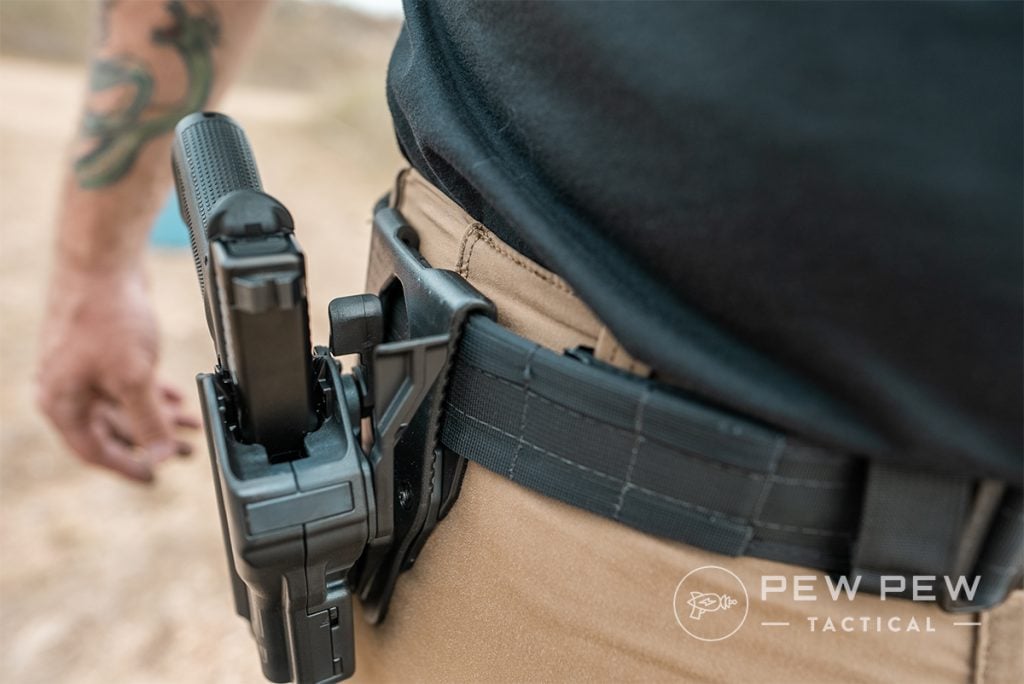
Group
Group refers to the measurement of the distance between projectile impacts on a target. Shooters will typically shoot multiple rounds at a given distance and see how close the shots land to each other, often to measure the degree of accuracy.
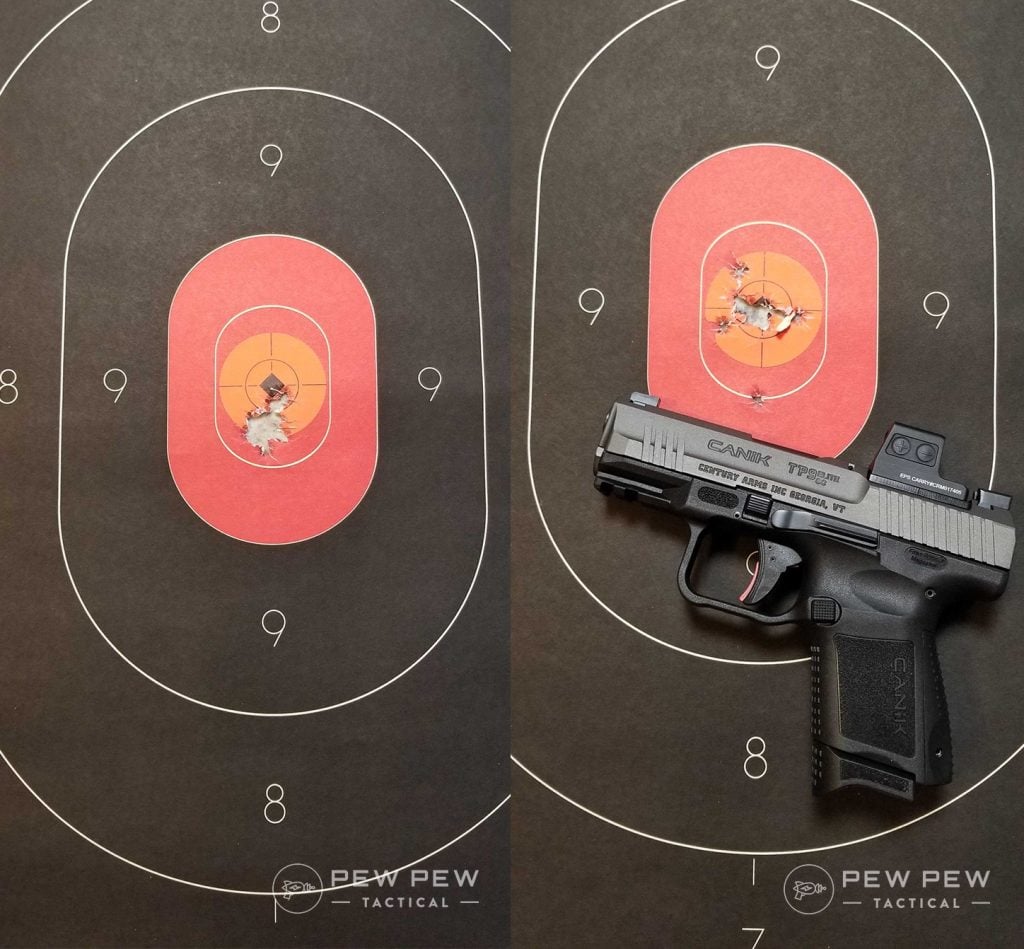
Slide
The slide is the portion of an automatic handgun that reciprocates back and forth, aka “slides.” A slide facilitates the ejection, extraction, and loading of the next round. It also tends to house your sights and can also have other controls on it, such as a decocker or safety. It also houses other crucial parts like the firing pin.
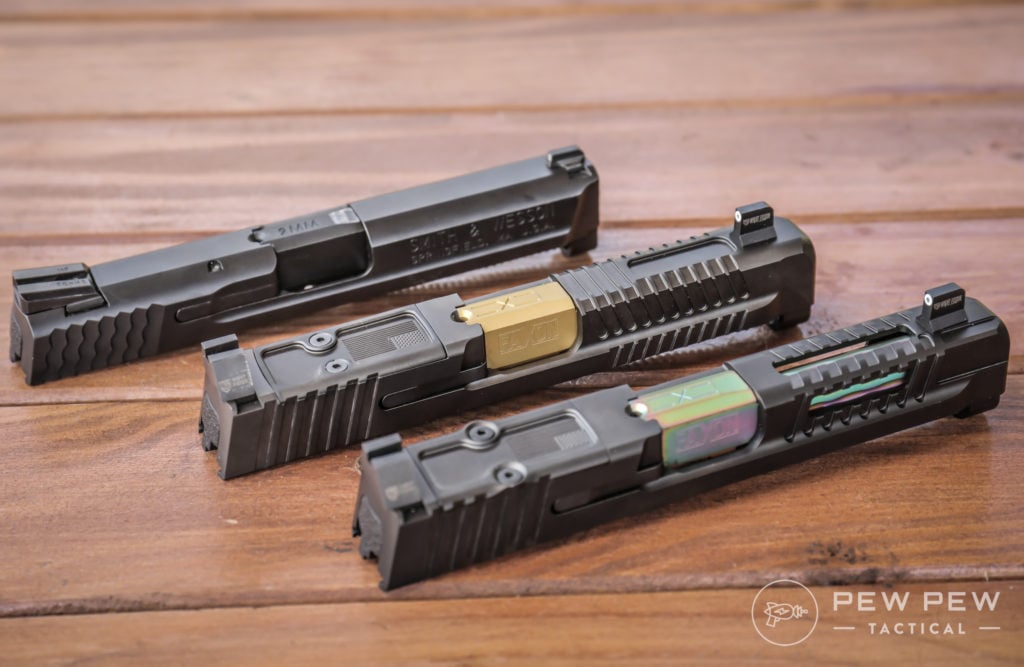
Frame
The frame of a gun typically refers to the lower portion of a handgun, which consists of a grip and the portion that the slide can ride on. Frames are part of all handguns and also house triggers, cylinders, firing controls, and other controls.
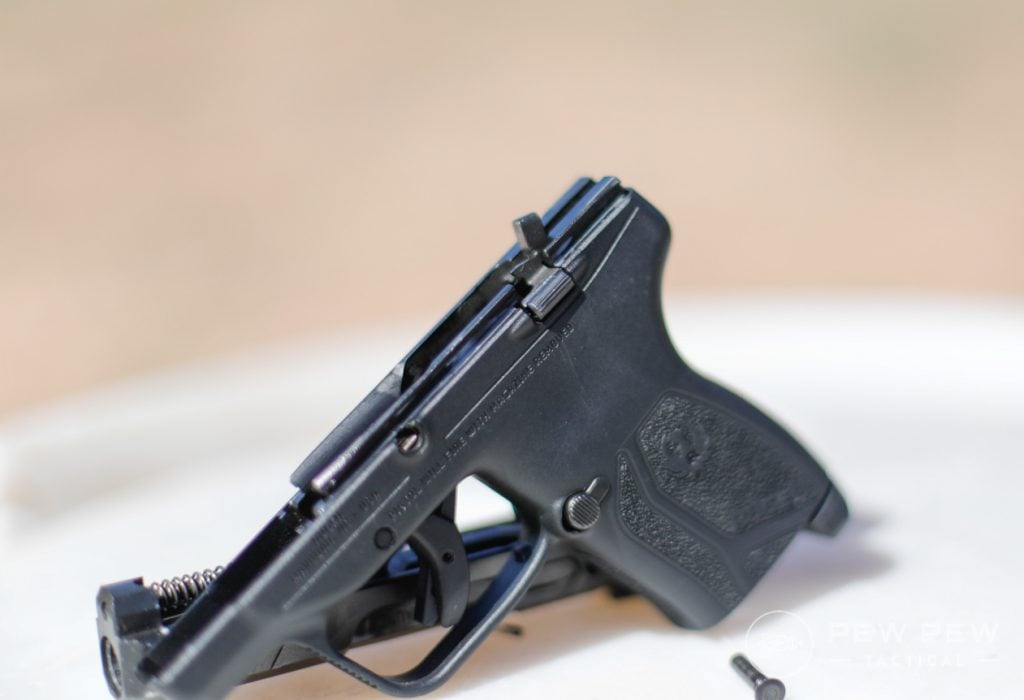
Action
Action refers to a firearm’s operating system. An action generally dictates how a firearm functions. Actions include revolvers and semi-automatics.
In the world of semi-automatics, actions are broken down further into different categories, such as short recoil systems, direct blowback-operated designs, delayed designs, and more.
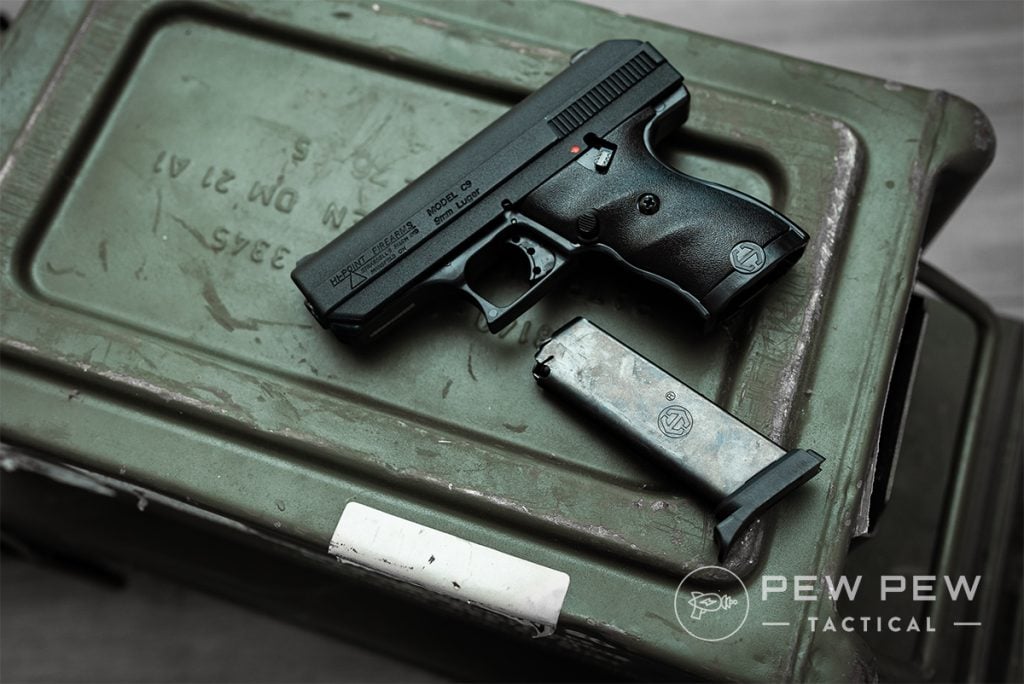
Low Ready
Low ready refers to a position where you hold a handgun with the barrel toward the ground at a 45-degree angle. This keeps the weapon ready but also safely pointed at the ground. This allows shooters to rapidly transition between pointing the gun in a safe direction and then at a target once they are ready to engage.
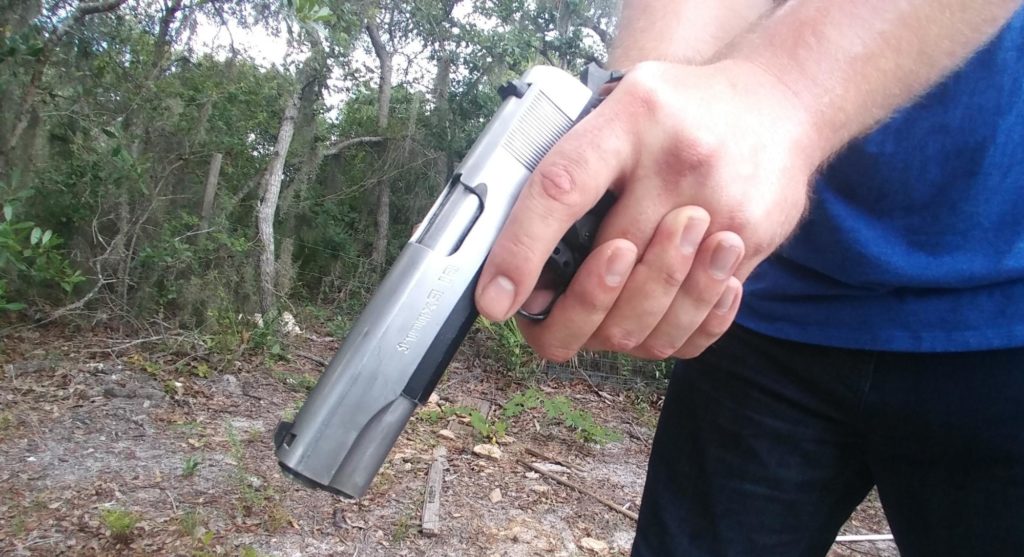
Sul
The term Sul is just another way to say point the gun down. Sul is Portuguese for South, and in the Sul position, you are holding the weapon tight to your body and pointing it downward. It allows for greater retention but still ensures the weapon is pointed down and in a safe direction.
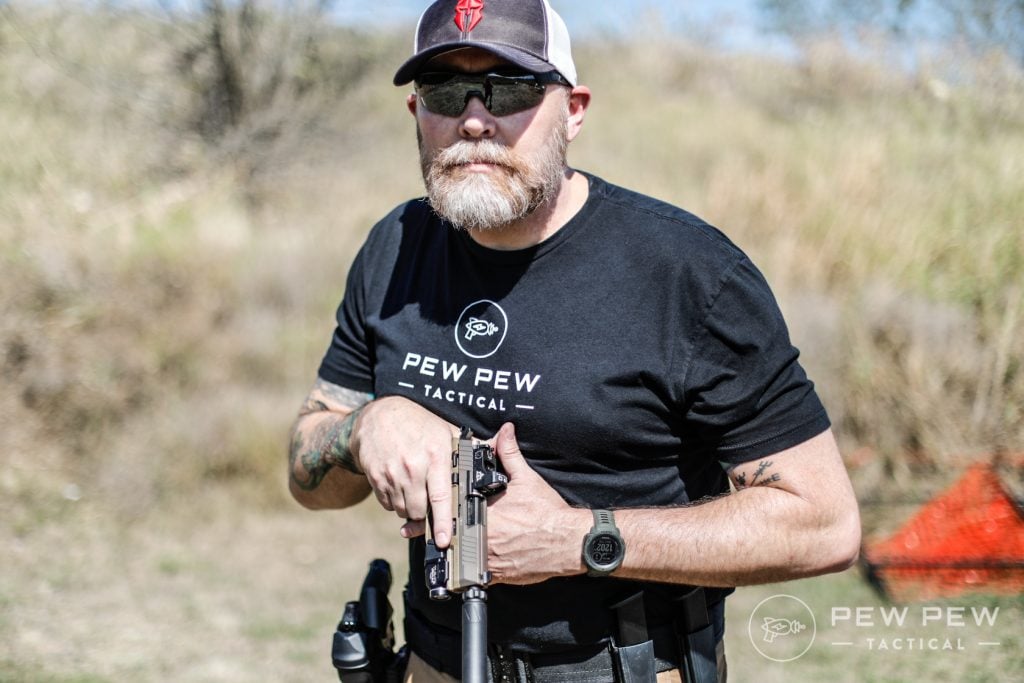
Retention
Retention applies to someone’s ability to retain a firearm. In terms of holsters, retention is used to describe how much force or action is required to remove the gun from the holster. Holsters are typically broken down into levels 1, 2, and 3, depending on the mechanisms that keep the gun in place.
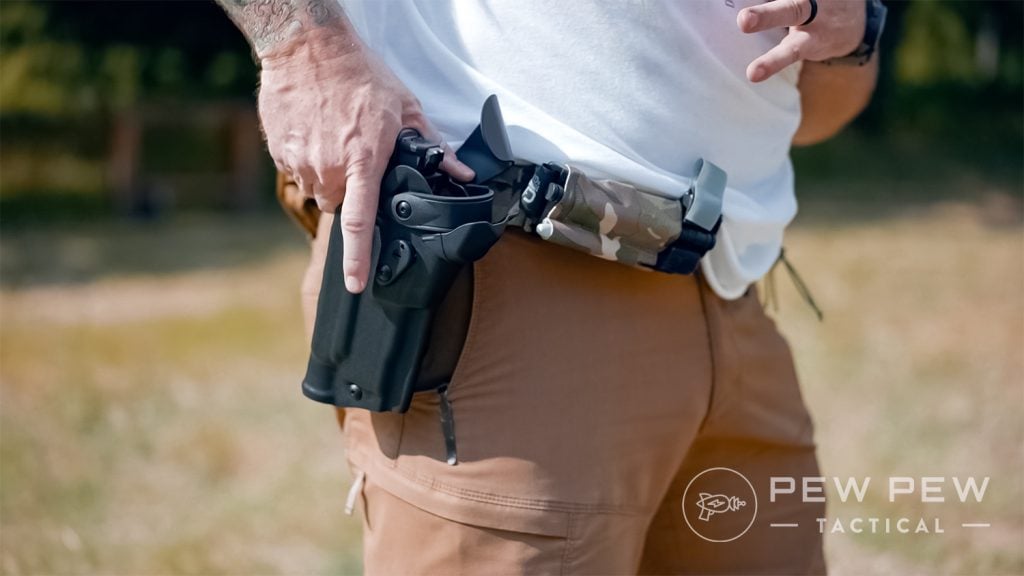
Retention can also refer to your own ability to maintain control over the weapon, whether it is in your hands, holstered, or slung.
Hammer
Firearms can use several different systems to fire a projectile. Hammer-fired refers to a style of gun where when the shooter pulls the trigger, a hammer at the rear of the gun drops and strikes the firing pin, which in turn strikes the round and fires the weapon.
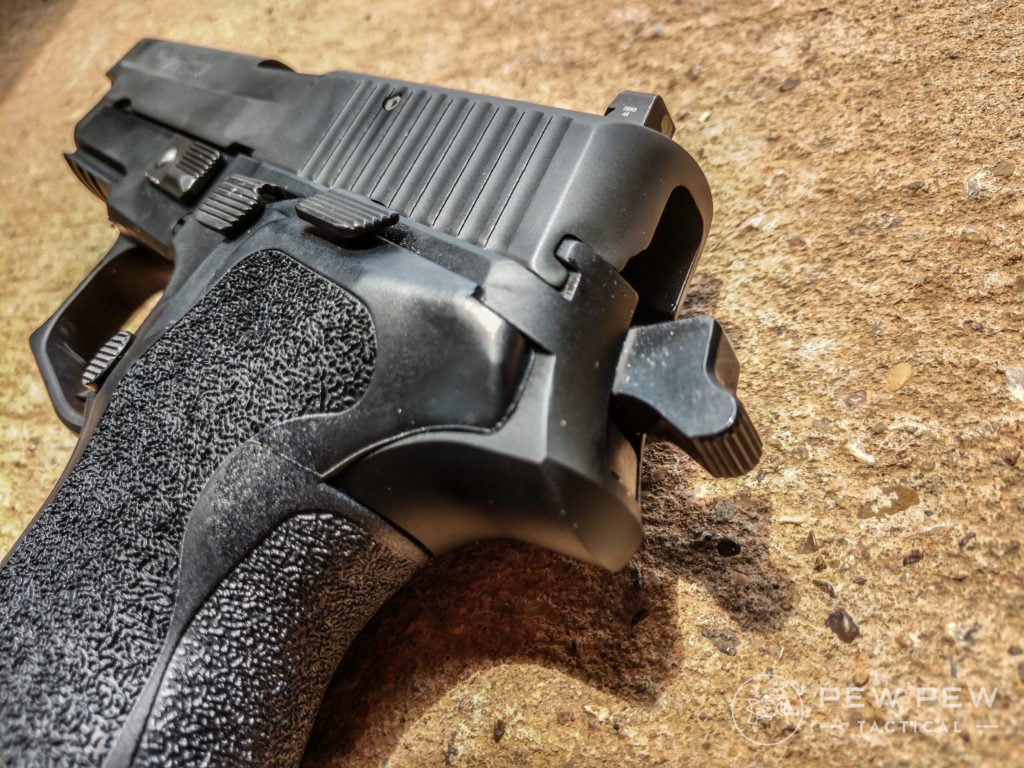
Striker
Striker-fired guns are another method of imparting impulse on the firing pin. A striker-fired gun uses a contracted spring that releases an internal striker (a rod) that is used to hit the firing pin.
Bullet Splash
Bullet splash refers to what happens when a projectile hits a hard surface and explodes into pieces. The splash, or spall, is the remnant of the bullet as it continues to move at high speeds. Splash can be dangerous if it ricochets and travels back toward the shooter or bystanders.
Rimfire
Rimfire refers to the placement of the primer. On rimfire guns, the primer is located inside the rim of the cartridge. These firearms will strike the edge of the rim to ignite the primer and fire the round.
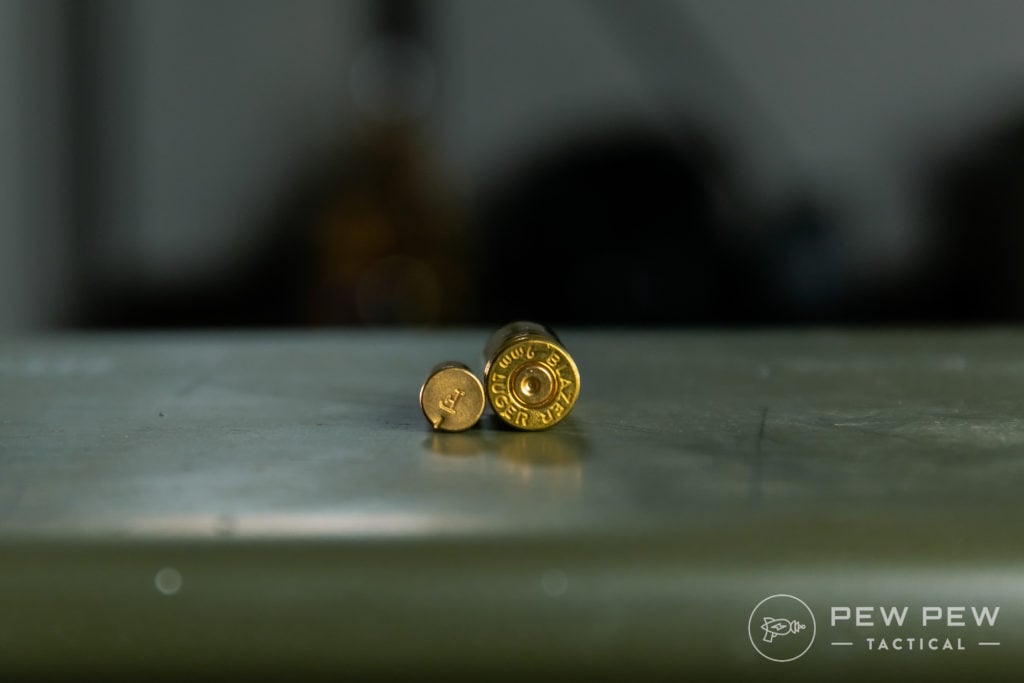
Rimfire weapons tend to be lower powered and are commonly chambered in rounds like .22 LR, .22 Magnum, and .17 HMR.
Centerfire
Centerfire calibers utilize primer that is placed in the center of the base of the cartridge. These make up the vast majority of firearms, including most pistol, rifle, and shotgun calibers.
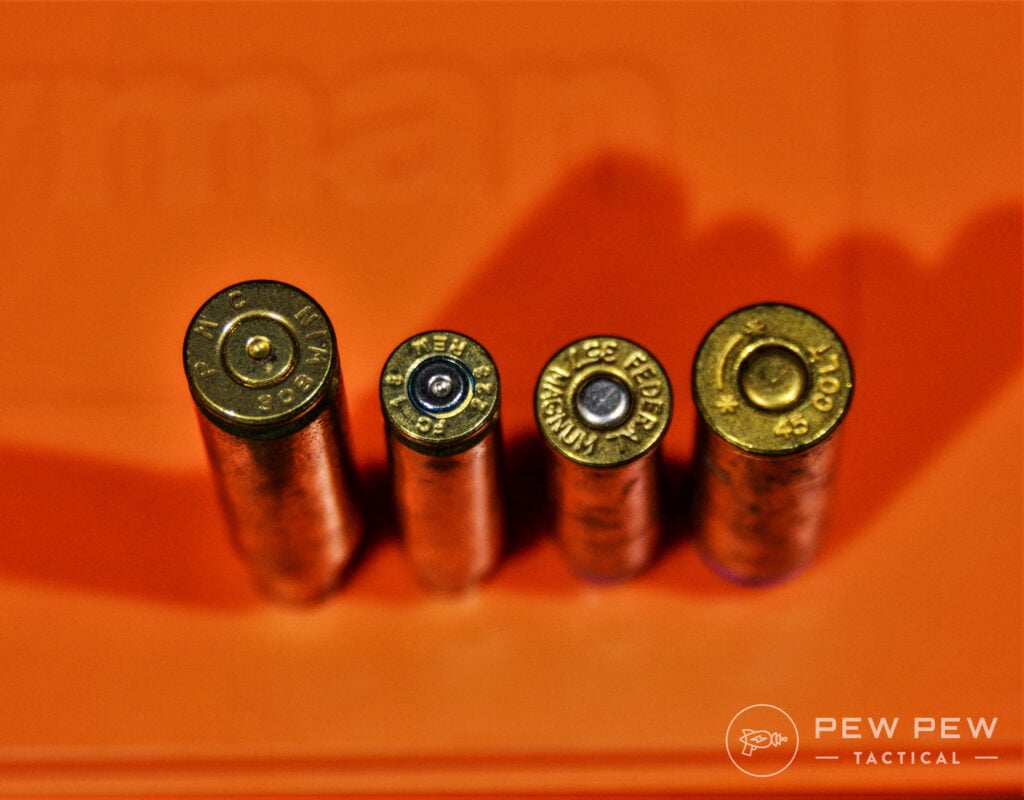
Final Thoughts
The firearm world is an ever-expanding one. With that expansion comes new terms and new language.
It is always good to try and stay on top of that movement and growth so that everyone is on the same page, which is essential for gun safety.
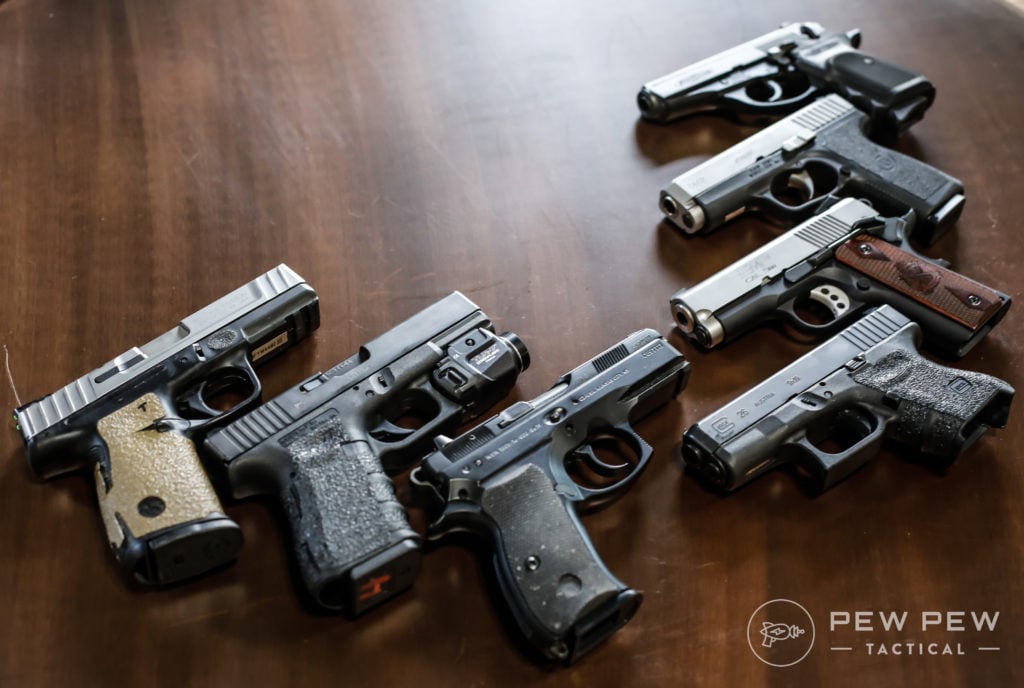
With that in mind, these are just a few of the terms out there, but some of the most important ones.
If you think there is a key term we left off of the list, let us know in the comments below! Got the terminology down and want to improve your shooting? Check out our article on the 9 Best Shooting Drills!

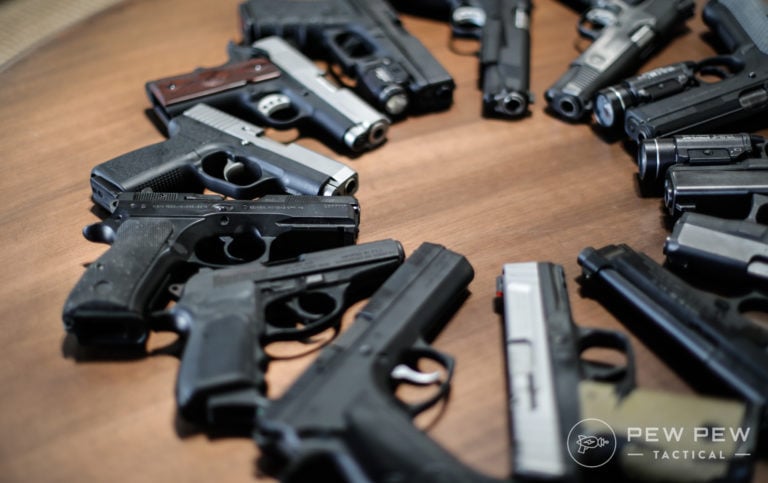
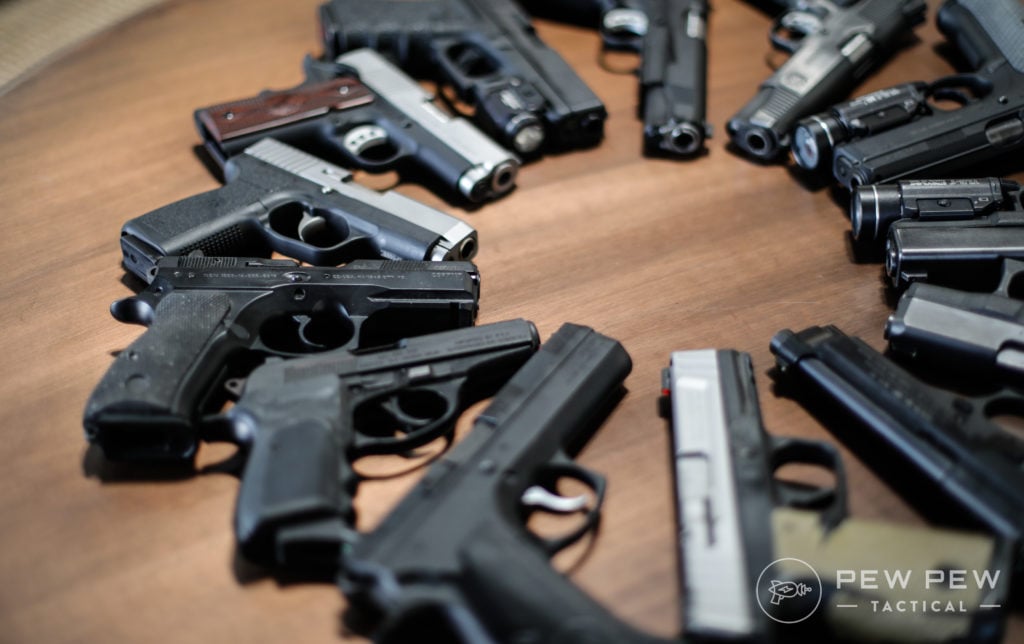
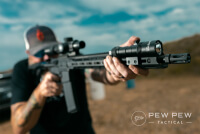






4 Leave a Reply
“In the world of handguns, there are very few loaded with clips….”
Reading that part of the article made me think of the time a “gun expert” corrected me and lectured me that the correct term is “magazine” when I told him the aftermarket 9mm clips I ordered were better than the factory clips that came with my Taurus 905.
Thank you for writing this.
I might add "High Register," referring to keeping your finger off the trigger, instead placing the trigger finger higher up (sometimes up on the slide). In classes I run, I tell students to "ride the slide."
Also, though I would find it weird to call a magazine a "clip," it is common enough that even the NRA Glossary says they're interchangeable. I wanted to post a link about this, but the site won't let me. Instead, I'd suggest Googling "nra glossary magazine clip" and clicking the American Rifleman link that pops up as the first choice.
Good article, I learned something.
"Frangible ammunition tends to explode on contact into numerous tiny particles."
Oh no....now the anti-gun are going to claim we use exploding bullets.
'explode' used here is a bit, I'll just say, 'dramatic'.
They break apart into smaller pieces, thus the class name 'Frangible'. They don't 'explode'.